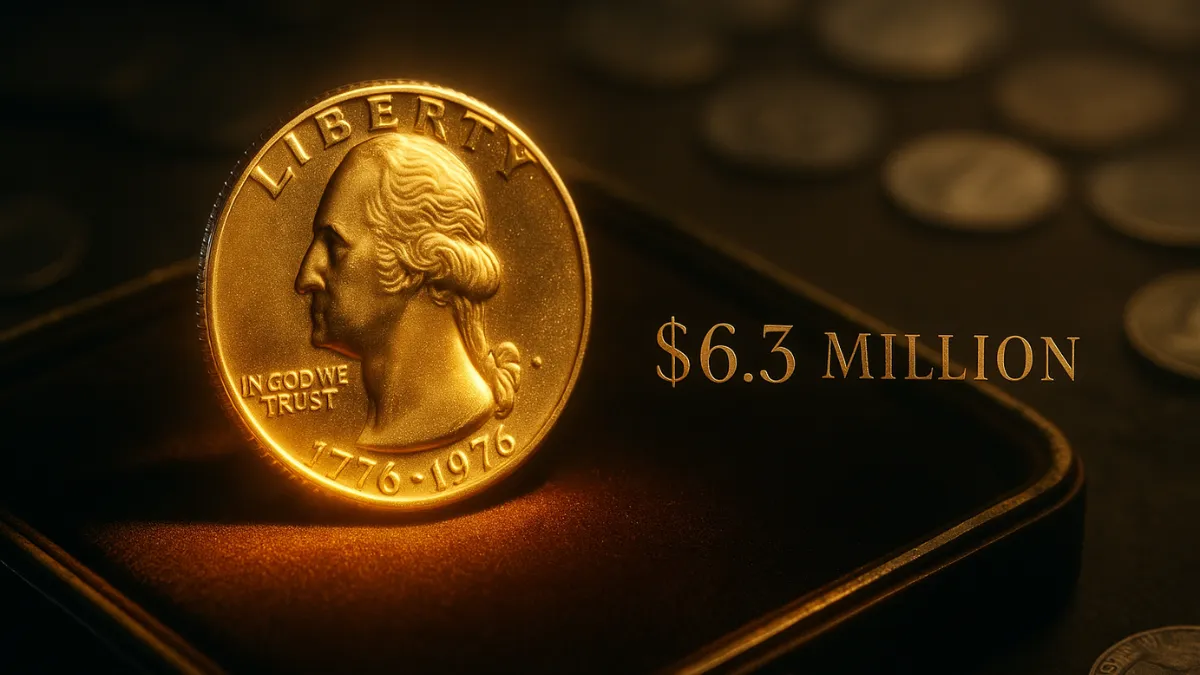According to reports, a simple Bicentennial Quarter is worth an astounding $6.3 million, reminiscent of a Hollywood treasure hunt. It’s possible that people are still using it today.
Yes, you read that correctly—a coin that was produced in the millions and might still be sitting in someone’s pocket, coin jar, or even a vending machine today could be worth as much as a luxury home. It sounds like something from a movie, but it’s a real possibility in the world of coin collecting.
What Makes the Bicentennial Quarter So Special?
The Bicentennial Quarter was issued in 1976 to honor 200 years of American independence. Instead of the traditional eagle, the reverse side features a special design by artist Jack L. Ahr—depicting a Colonial drummer. This unique design was part of a national celebration that also included redesigned dollar and half-dollar coins.
Though these quarters are still relatively common in circulation, a few standout examples are incredibly rare. One such coin is currently believed to be worth as much as $6.3 million.
The Rare Traits That Drive the Price
Most Bicentennial Quarters were struck using a copper-nickel blend. However, a select number were minted in 40% silver for collector sets. Some of these silver pieces gained significant attention due to minting mistakes or unique characteristics that are highly prized among collectors.
Experts in numismatics suspect the coin valued at $6.3 million has some or all of the following traits:
- A significant minting error
- Exceptional proof quality
- A rare origin story or discovery
- An extremely limited or undocumented production run
Coins with striking errors like double-die impressions, off-center designs, or any irregularities—especially on a historically important issue—can dramatically increase in value.
Still in Circulation? Here’s Why That’s Possible:
It may sound unbelievable, but it’s entirely possible that one of these ultra-rare coins is still being used in everyday transactions. Many people don’t closely examine the coins they receive in change or store away in jars. A valuable quarter might slip through unnoticed simply because most people aren’t aware of what to look for.
What Should You Look For?
If you suspect you might have one of these valuable coins, keep an eye out for these signs:
- Date and Design: Look for the dual date “1776-1976” on the front, with a Colonial drummer on the reverse.
- Mint Mark: A small “S” indicates it was minted in San Francisco—potentially a silver version.
- Silver vs. Clad: Silver coins are slightly heavier and produce a different sound. They also lack the reddish copper band seen on the edge of clad coins.
- Unusual Features: Coins with oddities such as off-center designs, double strikes, or unusual luster might be extremely valuable.
Why Are People So Interested in Rare Coins?
Rare coins often carry a sense of mystery and surprise. They’ve been discovered in the most unexpected places—from piggy banks and flea markets to spare change at gas stations. Beyond their financial worth, these coins are treasured as historical artifacts.
The Bicentennial Quarter, in particular, holds nostalgic value for many Americans, serving as a lasting symbol of the nation’s 200th birthday and the celebrations of 1976.
Last Thoughts
Whether or not the $6.3 million Bicentennial Quarter is still floating around in circulation remains unknown. However, this story has reignited widespread interest in coin collecting, prompting many to revisit their coin jars with fresh eyes.
So next time you get change from a store, take a closer look. That ordinary-looking quarter might turn out to be a small piece of American history—and possibly worth a fortune.
FAQs
Q1. What is the value of the rare Bicentennial Quarter?
The rare Bicentennial Quarter is believed to be worth $6.3 million due to unusual minting errors and its rarity.
Q2. How can I tell if my Bicentennial Quarter is silver?
Check the edge—silver coins do not show the red copper stripe and are slightly heavier, producing a distinct ring when tapped.
Q3. What mintmark should I look for on rare quarters?
Look for an “S” mintmark, indicating it was made in San Francisco and possibly part of a silver collector’s set.
Q4. Are error coins really worth that much money?
Absolutely. Rare errors like double-die or off-center strikes can make coins highly desirable and valuable to collectors.
Susan is a seasoned finance writer with a knack for breaking down complex money topics into clear, actionable advice. With years of experience in personal finance, investing, and market trends, she empowers readers to make smarter financial decisions. Her work has been featured in leading finance blogs and publications, where she combines sharp analysis with relatable storytelling. Whether it’s budgeting, wealth-building, or decoding the latest economic shifts, Susan’s mission is to help people take control of their financial future with confidence.
